Seabourn Quest - 21-day Ultimate cruise to Patagonia and Antarctica.
Story by Mandy Brown
Photography by Mandy Brown unless specified
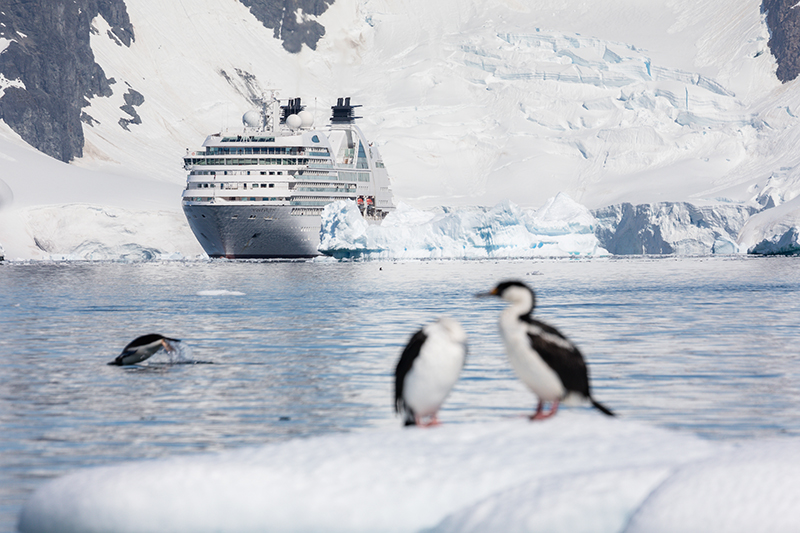
Photo by Brian Doyle Photographer
Mid-January 2019 my husband, Murray and I boarded Seabourn Quest at San Antonio, Chile and set sail to the Patagonia region of Chile. Waiting for us in our suite were our Seabourn Antarctic jackets, beanies and backpacks. The excitement of where we are heading to can be felt from everyone around us, including the crew. The adventure begins.

After a day and 2 nights at sea our first port of call in Patagonia is Porta Monte. The city of Porta Monte was rebuilt in the 6o’s after a devastating earthquake that destroyed most of its original architecture, consequently it looks like a small modern city. With several excursions to choose from we chose the longest for our day at port. An 8-hour tour to visit the Petrohue Rapids, Emerald Lake and the Chilean countryside. We drove along the shores of Lake Llanquihue heading further into the countryside, which continued to get more and more beautiful along the way. The Lake District has hundreds of stunning lakes, with many active Volcanoes dominating the surrounding landscape. We boarded a boat which took us on a 45-minute cruise on Lake Todos Les Santos, known as the Emerald Lake for its stunning blue/green colour. We then continued to the Petrohue Rapids. We walked the pathways and trails along the stunning blue rapids.

We then drove to Puerto Vargas, an old German settlement for lunch and a tour of the town and markets.
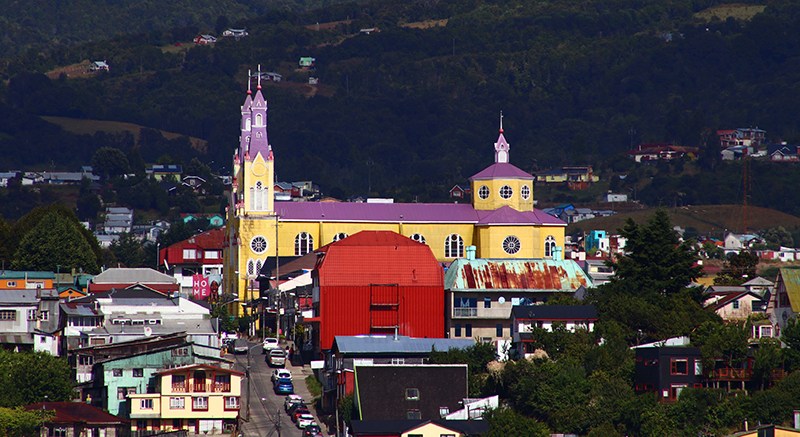
During the evening we sailed away from Puerto Montt and headed back out of the bay to the largest island of the Chiloe Archipelago, called Chiloe to visit the small city of Castro. This city is the third oldest in Chile. The Spanish conquerors taking possession of the archipelago in 1567. The houses on the island, as are many Chilean homes, brightly coloured, including the pretty stilted houses on the waterfront. Standing out clearly when we anchored in the bay was the bright yellow Church of San Francisco, with its two large steeples, declared Patrimony of Humanity by UNESCO. The average temperature in this region is 11c and has a consistent rainfall. We departed early in the afternoon (with a Seabourn celebratory farewell of Pisco-Sours, poolside of course) heading further south into the Fjords of Patagonia.

After departing Chiloe we have two days sailing ahead of us through the Fjords and the Strait of Magellan to Punta Arenas. To get to the Strait we headed out to the Pacific and down the coast for a day then back into the Fjord region. Seabourn Expedition Crew were on lookout all day for wildlife and to answer questions. I spent most of the day on the Observation Deck and was rewarded with personally making a sighting of a Minke Whale heading north past us. We also spotted a Fin Whale as it swam away from us, hence the terrible photo. Of course, being camera ready all day would be good, but the whales were on the move as were we, so we passed by quickly. Life onboard is very busy, between Whale and Bird watching there are fantastic lectures by the specialist expedition leaders. I now have a better knowledge about the different Whales from a Professor whose did his PHD on Whales and now heads a Whale research group in the USA. I also spent time with a professional photographer who was one of a number onboard to assist passengers with any photographic questions and help they need. Well tomorrow morning we will wake up in the Fjords again and the excitement of more wildlife watching closer to the ship.

At 8ish in the morning most of the passengers made their way to either the Observation deck or the forward on the deck 6 for hot chocolate, waffles and donuts as we cruised into a small Fjord and right up to the impressive El Brujo Glacier. Being summer season, the surrounding hills have no snow, consequently the stark contrast of the dark hills and the blue/white of the glacier was stunning. Small chunks of ice that have broken off floated around our ship as we approached very close to the glacier. A few dolphins were spotted swimming out of the small channel as we departed heading deeper into the Magellanes and onward to Punta Arenas. Navigating the Magellan Straits would have been an extremely impress feat for the ships of old, finding their way through the narrow passages to avoid going around the dangerous Cape Horn. Not all were successful. At 5pm we passed Isabel Island and the remains of the ship SS Santa Leonor, which sunk in the 60’s when it was a passenger ship. Originally built for the USA Navy as a war ship in the 1940’s. Thankfully no life was lost when it sunk. Now off to Caviar on the Deck as we continue to cruise through the Magellan Straits to Punta Arenas.

At Punta Arenas a wander along the shore takes you to a ship graveyard, where wrecks from the straits can be found discarded beside and on top of each other. Replicas have been made of the ships the HMS Beagle and the Ferdinand Magellan Ship NAO Victoria that are incredible to visit. You can see clearly why Charles Darwin hated sailing and was a clear land lover, preferring where possible to horseback ride to meet the Beagle at the next port. Living quarters were extreme.

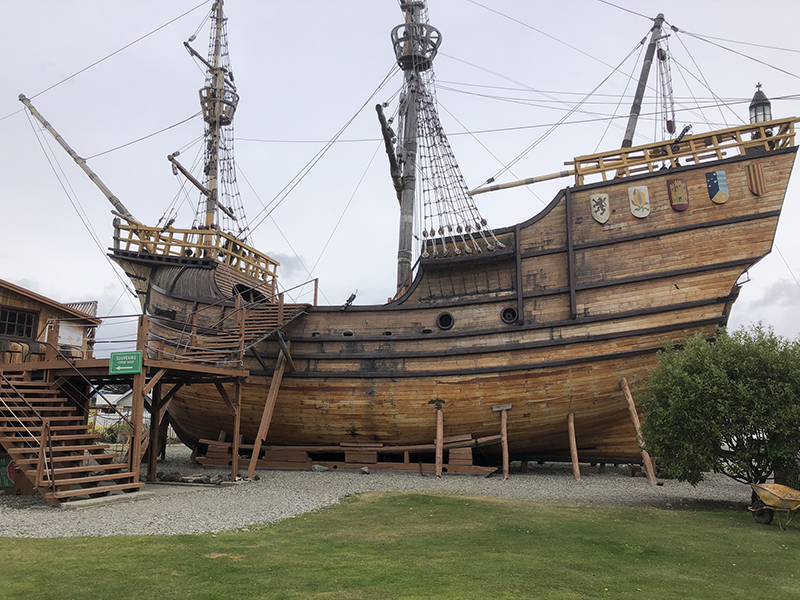
We departed from Punta Arenas in the afternoon to start our voyage to the most southern city in the world, Ushuaia, Argentina. Waking very early in the morning we headed out onto the observation deck as we sailed through Glacier Alley. We managed to get clear visibility to see some incredible glaciers high up in the mountains, with a few descending down further. We arrived in Ushuaia early afternoon, where we had an excursion into the Beagle Channel and the lighthouse at the end of the world.
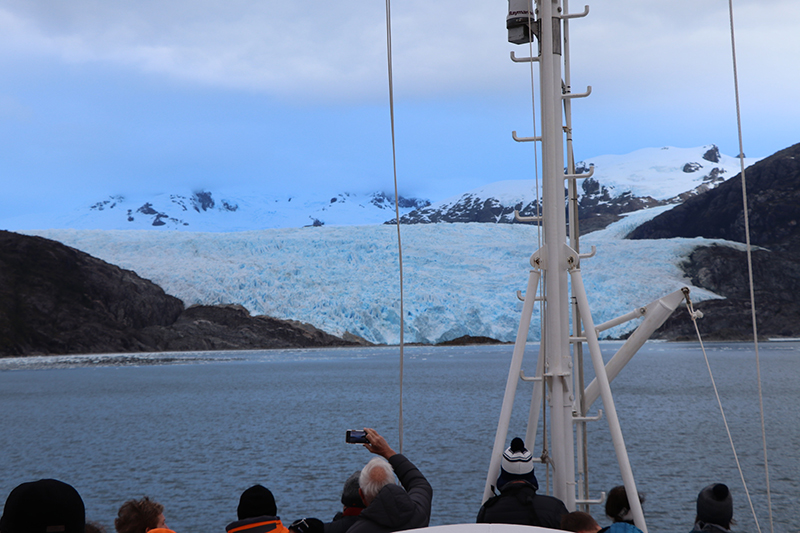
Ushuaia, Argentina is often regarded as the southernmost city in the world. It has a sub polar climate and is where we arrived in the afternoon. Heading out soon after berthing at port we went on a Catamaran trip into the Beagle channel. As we headed out into the Harbour in our catamaran the panoramic views were stunning with the jagged mountain peaks shooting up behind the city. We spent time cruising around the small rocky islands in the Harbour, firstly stopping at one where there were thousands of Cormorants. Then we cruised around another where a Colony of South American Sea Lions live, followed by an island where there were Rock Cormorants with their chicks and Giant Petrels. We then cruised further out of the Harbour to the entrance, cruising around the Lighthouse, which is situated on a small rocky island along with both a colony of sea lions and more Cormorants. On our way back to Ushuaia we came across a Minke Whale, which is the smallest of the Whales. Tonight, we start heading across the Drake Passage to Antarctica, the excitement is building.
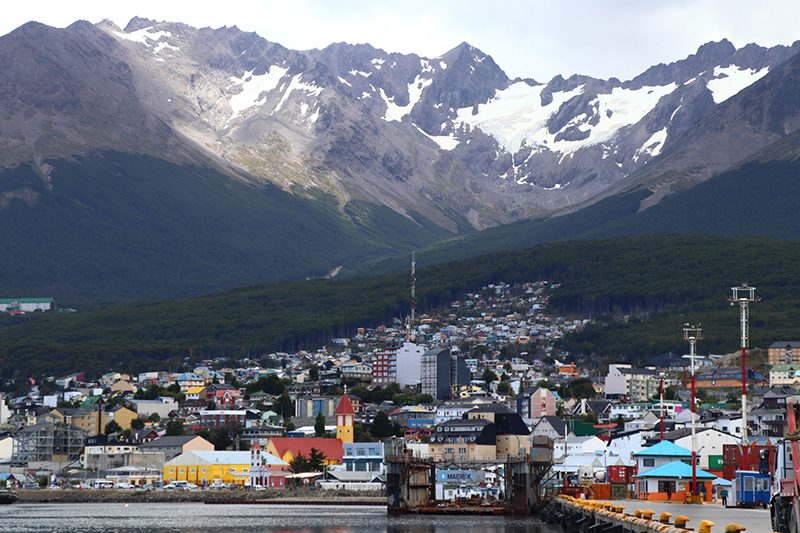

ANTARCTICA, WE’VE ARRIVED! The thrill you get when you wake up in the morning, look out your balcony window and view Antarctica for the first time is incredible. Everyone onboard Quest is bubbling with excitement as today we all get to go ashore and step foot in Antarctica territory for the first time. We are anchored in Yankee Harbour, Greenwich Island in the South Shetland Islands, Antarctica. Stepping out on our balcony we spotted Penguins swimming in the water below us heading to shore. They swim incredibly fast. Murray and I dressed up in the full Seabourn Antarctica gear and were taken by zodiac to land on the rocky shore. The smell of Penguin Guano from the zodiac was strong and on land incredible, but we soon got fairly use to it. Surrounding us and walking past us were some of the 5000 pairs of Gentoo Penguins in an enormous breeding colony. These Penguins are average size for a penguin with a white front, black back and orange beak. The baby penguins, which are now almost the same size as the parents still have their fluffy coat and are still fed by their parents. Penguins have right of way in Antarctica and this could be tricky at times when you had them coming towards you in all directions. Standing still and waiting to see what they would do tended to be the best option. There were also some elephant and Antarctic Fur seals in amongst the colony. The Seabourn Staff work exceptionally well in getting the right numbers of people off and on the land, safely and ensuring the least amount of disturbance to the wildlife and environment. Tonight between 9pm and 10.30pm as the captain is taking the ship out of the Harbour to our next destination, we will be diverting to do a tour around a huge iceberg that is so big they are calling it a floating island or ice island. Looking forward to tomorrows wildlife.


This morning we woke to a stunning sight of Half Moon Island where Seabourn Quest moored for the day. We had a very busy day today, firstly taking a zodiac ride onto the island where we made a short walk up a small slope of rocks and snow to where a nesting colony of over 3000 breeding pairs of Chinstrap Penguins live. They seem to be a much more active and vocal penguin than the Gentoo Penguins. We saw much more action happening between the parents and their neighbours. The baby penguins seemed more vocal as well. They were also very relaxed around us and not too bothered with having to share their tracks with us, although again we had to stop to give way to them.
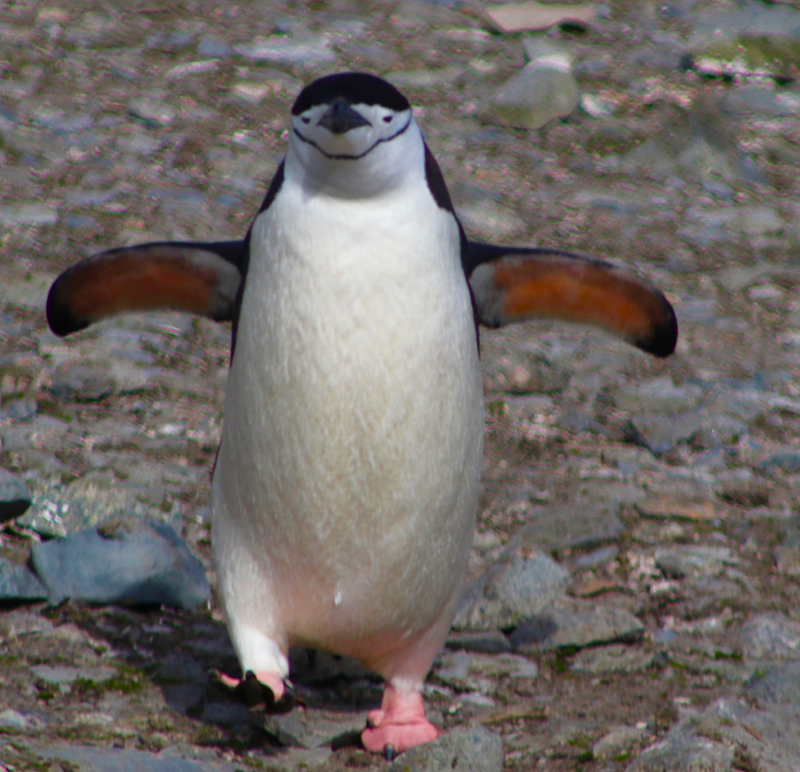
In the afternoon we were extremely lucky as we were on the last kayak booking for the day, unfortunately the other bookings were all cancelled due to high wind conditions. The water was virtually flat when we went out. It was amazing kayaking around an iceberg, which makes an incredible amount of noise, as does the smaller pieces of ice floating around. It is constantly making different cracking noises. We were thrilled when we saw a Minke whale swim close by, along with many Penguins who all seem to be intrigued with us in our yellow kayaks. The Seabourn Crew were amazing fitting us out in our dry suits and boots over our many layers of thermals. The guides are fabulous and their knowledge incredible. Also making sure that everything we do is safe, easy and enjoyable. They are the best of the best.

Last night the Captain took us on a scenic cruise to Deception Island which is actually a volcano that blew it’s top and formed a caldera, which then turned into a deep and sheltered Harbour, great for us, but not for the thousands upon thousands of Whales who were killed by the Whalers, who brought their catches into the Harbour to be processed on the land where a Whale station was built. The station was destroyed by volcanic ash in an eruption in the 60’s and 70’s, but that was far too late for the many lost whales. Not a story I’ll go into here.
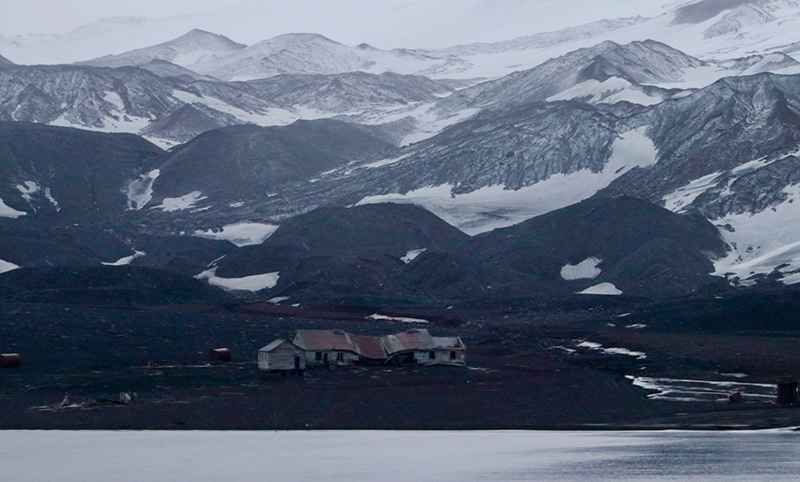

Today the weather ruled, well most days in Antarctic the weather does rule. Today plans were changed due to a weather change that brought the strong Antarctic winds called the Katabatics, which are formed by the cold, dense air flowing out of the polar plateau of the interior down the steep vertical drops along the coast. With the average altitude of the Antarctic interior at 14,000 feet and the snow reflecting the sun the interior is the coldest place on earth. Consequently, we have extremely cold, strong winds. We could anchor in a sheltered bay and sit there for the day, but we have a fantastic Captain, Crew and Expedition Team who instantly plan the next best thing, we go exploring. The Captain took us through the narrow Neumayer Channel, and we headed towards the Palmer Archipelago. We came out of the Channel and the winds were stronger, so we turned to port and the Captain decided to attempt to go through the Lemaire Channel, which is spectacular with incredible mountains on either side, often seen in photographs of Antarctica. The ship cruised through the channel as far as we could, but unfortunately a large iceberg and pack ice had blocked the narrowest part. Not perturbed the Captain turned us on a dime and we headed out for cruise around for the rest of the day. Everyone onboard were excited, laughing and enjoying the scenery. Also, most braved the extreme cold to take photos and look out for Whales. What will Antarctica bring us tomorrow?

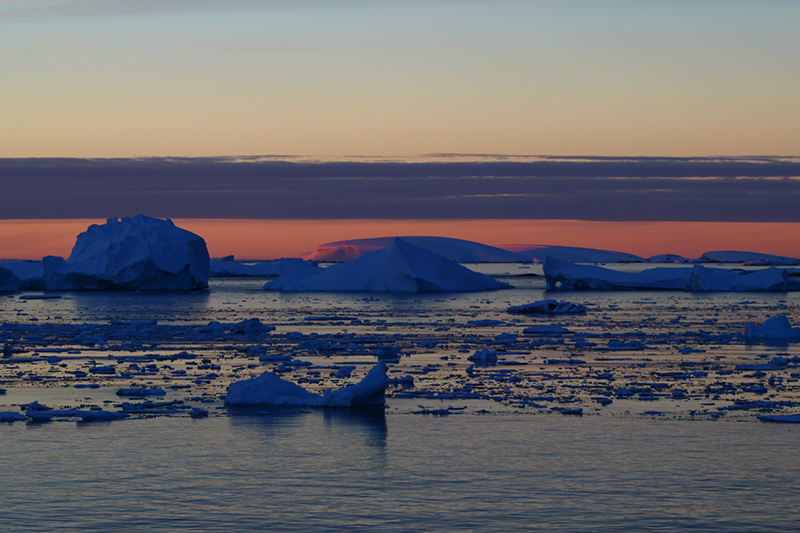
We’ve had a very busy couple of days and incredible weather, so I will have to do two posts today to keep up. We cruised close to Torgersen Island in the entrance to Arthur Harbour in the Palmer Archipelago of Antarctica. This island is the site of a study on the impacts of tourism and has been divided into two areas, one open to visitors and the other closed as a scientific reference. This site together with other nearby islands not visited by tourists provide a unique experimental setting to examine the relative effects of a natural versus human induced variability on Adelie Penguin populations. There is also an American scientific base, which was closed to visitors. Due to the study we were unable to go on land so we took zodiac tours around the small islands and rocks and viewed a mix of wildlife, from large numbers of Adelie penguins, Elephant seals lazing about on Elephant rock and a very special sight of two Crabeater seals sunning themselves on a Bergy Bit (very small iceberg). The coat colour of the younger seal was a beautiful pearly cream. As we sailed out of the area and headed towards Lemaire Channel we viewed many Humpback whales slowly swimming the waters and feeding the abundant krill. A Mother and calf were spotted with the calf having fun in the calm waters. Sunset was at about 11.30pm with most of the passengers and crew up and partying on deck watching the spectacular sunset.

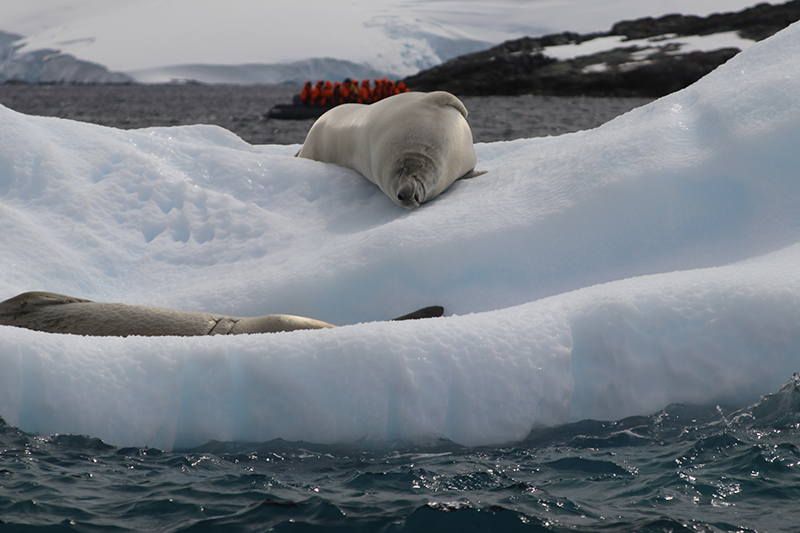
Today was yet another spectacular day with blue skies and calm waters. We had sailed into Paradise Bay overnight and woke to an incredible view. We were out on the first zodiac this morning and headed to Water boat Point, the site of the Gonzalez Videla Chilean base. We were met by the second in charge of the base and were invited to go inside to view their living and working quarters, also to wander through their small base museum and souvenir shop. Never thought we’d be shopping on Antarctica mainland. Yes, were have now set foot on the mainland of Antarctica today. The base site is right on the edge of Water boat Point and right in the middle of a Gentoo Penguin colony. Can’t say I’d be happy to have my day spent smelling Penguin Guano all day! There is a position going to spend 4 months on a small yacht in the Harbour measuring the tide every 2 hours. I’ve seen the yacht and although the Harbour is stunning with Whales swimming quietly feeding and Gentoo Penguins feeding and fighting over pebbles for their nests, which would be fun to watch, my first thought is the extreme cold coming through the keel of the yacht.

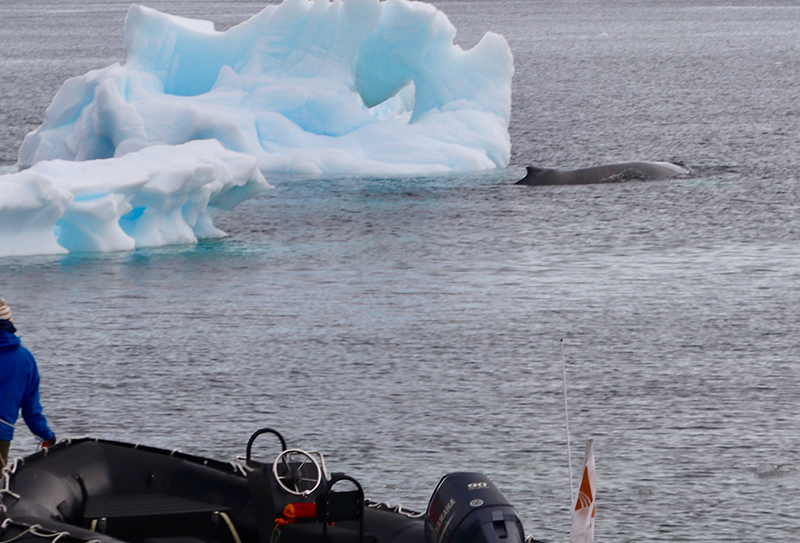
There were a few Whales in the Harbour this morning. I watched a Mother and calf for a very long time feeding and playing as we wandered around the edge of the base and again when I was back at the ship. From our suite balcony I watched the whales and Penguins for the rest of the day. Tomorrow is our final day in Antarctica and every day has got better and better, can’t wait to see what’s in store for us.

GOODBYE ANTARCTICA YOU’VE BEEN INCREDIBLE
This evening we are departing Antarctica to cross the Drake Passage and head north to the Falkland Islands. The Captain and Chris our Expedition Leader have planned for us to cross as fast as we can to try and make the Falklands a day sooner so we can visit New Island as they have a special visit in store for us.

In the meantime, we have our final day in Antarctica, and we spent it enjoying the wonders of Enterprise Island and Wilhelmina Bay, where we anchored last night to the wonder of large numbers of Humpback Whales feeding. We went out in a zodiac and spent some time following a group of whales who at one stage came extremely close to us, with a large whale surfacing to look before diving down to feed. The whale was so close we all took a big breath in as it was incredible, especially in a small zodiac. There is much more to see in this bay, so we dragged ourselves away from the whales to go to the wreck of an old Whale Factory Ship called the Guvnernorn. The ship caught fire and the crew tried to save their cargo of blubber and whale oil from about 50 whales, but they lost the lot. No crew were lost as they all managed to get onto the smaller whale catching boats. The rusting wreck of the ship was used today by 4 private yachts to tie up to and take shelter. On a small rocky islet across from the wreck were the remains of a couple of the ships water boats, they were used to collect ice for the boilers to render the blubber. Must admit we were all pleased with the ships demise.


Well I must tell you that if you ever have the opportunity or are making up your bucket list Antarctica needs to go to the top. I have travelled quite a lot and have been lucky enough to go to some special destinations, but Antarctica steals the show. I have tried, but no words really describe the sensation of arriving in Antarctica, of spending a few days visiting some incredible places and seeing wonderful wildlife. It is protected by the Antarctic Treaty and IAATO oversee the policing of tourism, but we need to make sure that the Treaty does not get broken or that countries just use their bases for the allowed scientific research with no military. We need to make sure the continent stays a peaceful haven for wildlife and for any resources not to be plundered.
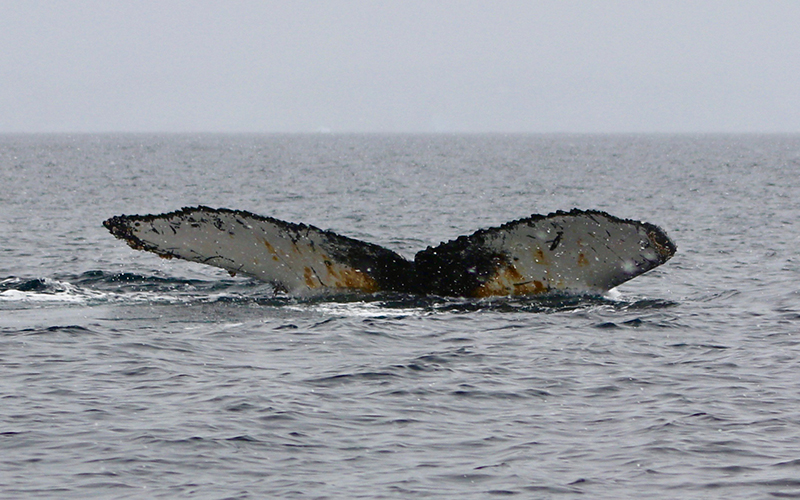
You can see Antarctica has won my heart; I hope one day it wins yours.
The journey continues with more adventures and an unscheduled stop.

We arrived in the Falkland Islands a day early as planned by the Captain and Chris our Expedition Leader and anchored in a bay on the western side of the large western island of the Falklands. We transferred to the nearest beach by zodiac and a couple of the locals came and opened the tiny museum, where some of the remnants of whaling harpoons, harpoon guns, machinery and whale bones are exhibited. We walked about 1km up a slight incline and over to the other side of the thin island where there are large cliff and rock faces. Making home of this area are colonies of Rockhopper Penguins and Albatross’s. The two bird species live happily together. Not only were there Rockhopper penguin chicks that were quite large, but also many Albatross chicks who are just adorable, fluffy grey bundles. I was sitting on a rock just watching the goings on of these birds when I was told to look to my right slowly and a guide said not to panic and to stay still. I turned to my right and not a foot from me was an extremely large Albatross who had apparently just landed and was heading to feed its chick. Wow what a surprise, but incredible. Tonight, we head to the eastern island of the Falklands, to Stanley. Tomorrow we have a big adventure planned with a long trip to see some bigger penguins.

This morning we arrived in Port Stanley, Falkland Islands. Stanley is the capital and only true city in the Falkland Islands. When Argentina invaded and occupied Stanley for about 10 weeks during the Falklands War in 1982 they renamed the town Puerto Argentina, which today is considered extremely offensive to many islanders.
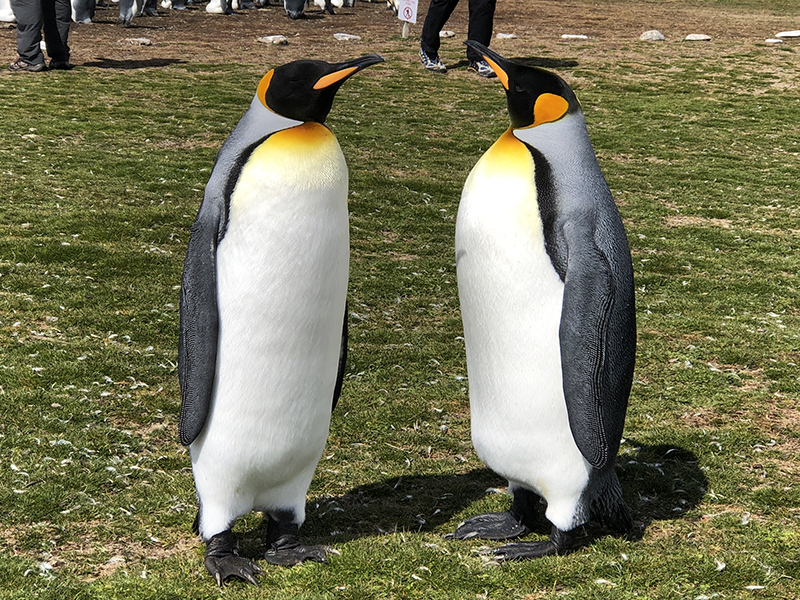
We chose to do a journey out to the far north coast of the island to a place called Volunteer Cove. This is where we met up with the big King Penguins and Magellanic Penguins. Firstly, we had to get there. With a fleet of Land Rover Defenders, we journeyed across the island, starting with a small tar sealed road near Stanley. This then led onto a dirt road for approximately an hour and a half long trip, stopping for a bathroom break before we then headed out across the peat covered rough terrain, 4WD for about an hour to the coast. The drive wasn’t for those who suffer from neck or back pain as we hardly stayed in our seats most of the way. Arriving at Volunteer Cove we started seeing Magellanic Penguins mixed in with the local sheep. After all the Land Rovers parked up, we walked a small distance to see a large colony of King Penguins. They were stunning and many of them had their babies, who were still small and tucked up under their bellies, resting on their mum’s or Dad’s feet. The Penguins were very friendly or nosey and came very close to us all. Nesting not far from them were a colony of Gentoo Penguins, who didn’t seem at all bothered by their large cousin. The wild and windy coastline was stunning and in the short time we visited, we apparently had a typical Falkland Islands day of 4 seasons in one day, including hail. We then headed back to Stanley another 2 and half hour rough terrain journey. Our driver Mike was born a couple of years after the Falklands war, but interestingly he said that although most of the land mines left by the Argentinians have been cleared, it has been ingrained into him that those places are no go zones. They even tried to get the locals happy with the areas, by playing a game of football on the cleared land, but they still don’t trust it. We passed what was left of a couple of Argentinian Chinook Helicopters that had been bombed after landing on the Island. The islanders were treated so badly by the Argentinians to this day they don’t have anything to do with the country at all. With around 4000 inhabitants in the Falkland Islands tourists from cruise ships frequently outnumber residents.

Punta del Este, Uruguay. After 2 days at sea from the Falkland Islands we arrived back in South America. Punta del Este is a resort city on the Atlantic Coast. Its year-round population is approximately 9,280 but come summer the city booms into large numbers. Often referred to as the Monaco of the South, The Pearl of the Atlantic and the St Tropez of South America. We arrived on a very busy Saturday where tourists and locals were enjoying the sun and sea. After being in Antarctic waters for some time it felt very strange to wake up in a tropical climate. We spent the day wandering this small resort city, people watching, yacht watching and of course trying the local seafood. Bags need to be packed tonight as we head to Buenos Aires and home tomorrow.

This Seabourn cruise has been the best journey, not just cruise that we have ever experienced. Made extra special by the Captain, Crew and Expedition Team of Seabourn Quest. We have lots of wonderful memories to take home with us. We have a stronger appreciation of the things everyone needs to do to try and restore and protect our planet. We have been privileged to visit Antarctica a very special continent that we hope stays protected forever.




